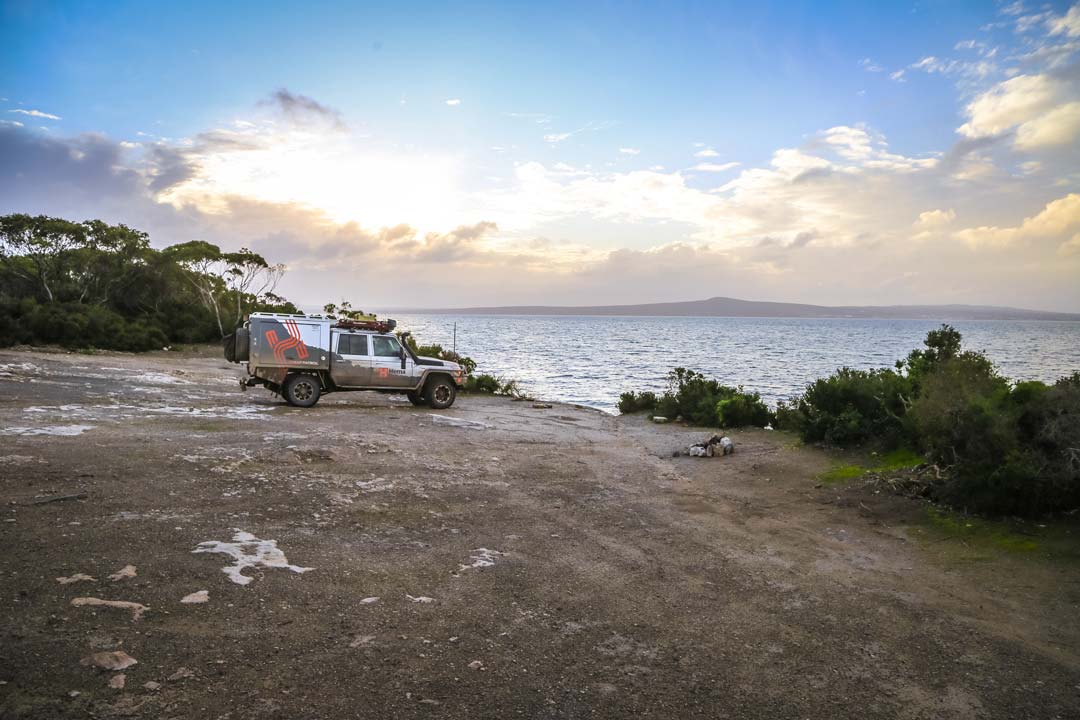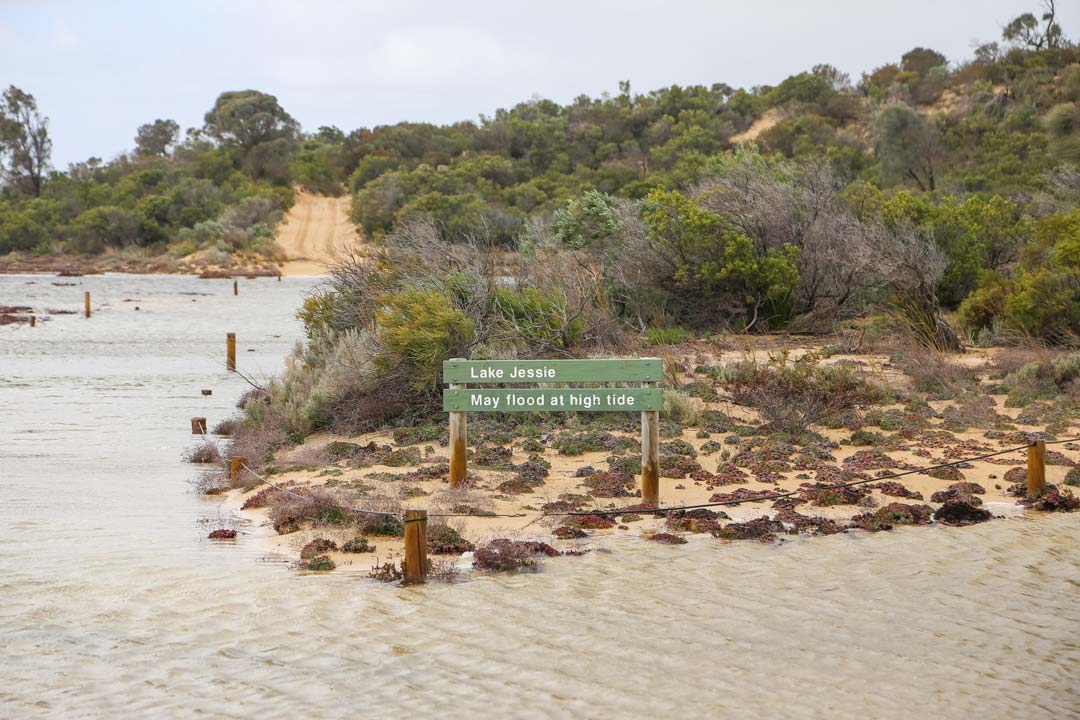Coffin Bay & Lincoln National Parks
 This trip between the farthest reaches of Coffin Bay and Lincoln national parks gives travellers the chance to experience the best of the Eyre Peninsula's coastal scenery, sand driving and other natural and man-made attractions.
This trip between the farthest reaches of Coffin Bay and Lincoln national parks gives travellers the chance to experience the best of the Eyre Peninsula's coastal scenery, sand driving and other natural and man-made attractions.
Practise your sand driving before tackling Coffin Bay’s challenging and beautiful coastline, and preferably travel in tandem with another vehicle. The tides can be huge here and getting stuck is not an option.
Essential information
| Grading | AWD if you’re content to stay on the main tracks. Low range and high ground clearance if you want to do serious beach and dune driving. |
|---|---|
| Time | At least two days |
| Distance | 351km, Port Lincoln return |
| Longest drive without fuel |
151km, Port Lincoln to Lincoln NP return |
| Fuel & supplies | Port Lincoln and Coffin Bay |
| Best time of year | Pretty good any time of year; in summer the area is a few degrees cooler than Adelaide, and it’s a couple of degrees warmer in winter. |
| Warnings | Keep an eye on the tides if driving to and from Point Sir Isaac along Seven Mile Beach. If you do tackle the beach runs you’ll need to carry an on-board compressor. Watch out for wandering mobs of kangaroos and emus while driving in the thick scrub on Point Sir Isaac. Beware of unstable cliffs and hazardous sea conditions including rips, swells and freak waves. Feral bees can be attracted to water in summer. |
| Permits and fees | National Park entry and camping fees apply. A permit and gate key is required to access Memory Cove Wilderness Protection Area and it is limited to five campsites. A permit and key is required to access Whalers Way. |
| Camping |
Lincoln National Park Surfleet Cove & Fishermans Point, September Beach, Carcass Rocks, Donington Beach, Horse Rock, Engine Point, Maclaren Point, Richardson’S Shack, Spalding Cove & Woodcutters Beach, Taylors Landing, Memory Cove, Memory Cove Wilderness Protection Area Coffin Bay National Park Yangie Bay, Black Springs, Morgans Landing, Big Yangie, The Pool |
| Important contacts | Port Lincoln Visitor Information Centre Ph (08) 8683 3544, www.visitportlincoln.net ; Department of Environment and Natural Resources Ph (08) 8688 3111; Coffin Bay Tourist Association Ph (08) 8685 4170, www.coffinbay.net |
The drive
Lincoln National Park is just 13km southwest of Port Lincoln along the Proper Bay road. Once in the park you can head down to Memory Cove - if you've picked up a gate key from the Port Lincoln Visitor Information Centre. Then if you are interested in a bit of beach driving, try taking the Sleaford Wanna Dunes back across to the Whalers Way access road.
Even though it isn't in either Park, Whalers Way is worth including as it is a feature of the local area and takes you to the southernmost tip of the Eyre Peninsula. It is on private property and you'll need a permit and a key from the Port Lincoln Visitor Information Centre. While a 4WD isn't mandatory, it's advisable as the road often proves too rough for conventional vehicles.
 Leaving aside the towering sand dunes of Lincoln National Park, the most exciting drive in the area is to Point Sir Isaac along Seven Mile Beach in Coffin Bay National Park, but it's one that must be undertaken with all due diligence. It's a six-hour return trip from the park entrance and you'll need to coincide the drives with low tide, as high tides often come right up the beach and the only escape routes are the entry and exit points. The sand is also extremely soft and usually pretty chopped up, meaning you need both low range and good underbody clearance. You will also need to deflate your tyres and carry an on-board compressor to re-inflate them once you're back on hard ground. It's well worth it, with some spectacularly rugged coastal views at the tip of the point.
Leaving aside the towering sand dunes of Lincoln National Park, the most exciting drive in the area is to Point Sir Isaac along Seven Mile Beach in Coffin Bay National Park, but it's one that must be undertaken with all due diligence. It's a six-hour return trip from the park entrance and you'll need to coincide the drives with low tide, as high tides often come right up the beach and the only escape routes are the entry and exit points. The sand is also extremely soft and usually pretty chopped up, meaning you need both low range and good underbody clearance. You will also need to deflate your tyres and carry an on-board compressor to re-inflate them once you're back on hard ground. It's well worth it, with some spectacularly rugged coastal views at the tip of the point.
Things to do
Forking over $25 per vehicle gives the right to camp for one night at Whalers Way, with further camping available at $5 per night. Besides what we've mentioned here, there are heaps of things to do around Port Lincoln. The town berths the biggest fishing fleet in the southern hemisphere, and is known as the Seafood Capital of Australia. Fishers can expect King George whiting, snapper and crabs. Even if you're not into wetting a line, who doesn't enjoy eating seafood? Tuna, prawns, abalone - make sure you also try the Coffin Bay oysters, regarded by many gourmets as the best in the world.
 There are also a few interesting local museums: the Koppio Smithy National Trust Museum is vast and varied, and includes a fencing/barbed wire exhibit; also of interest is the Axel Stenross Maritime Museum and Railway Museum.
There are also a few interesting local museums: the Koppio Smithy National Trust Museum is vast and varied, and includes a fencing/barbed wire exhibit; also of interest is the Axel Stenross Maritime Museum and Railway Museum.






0 comments